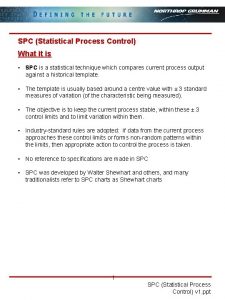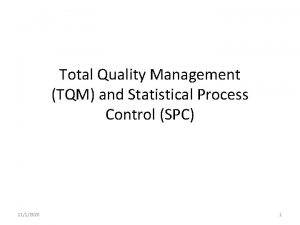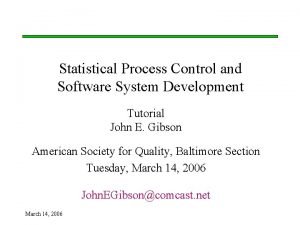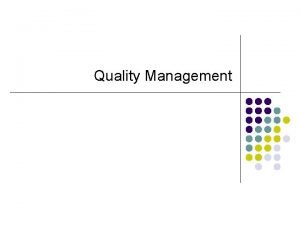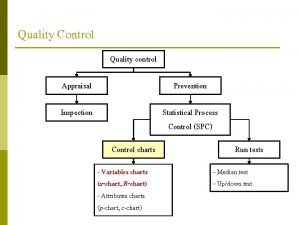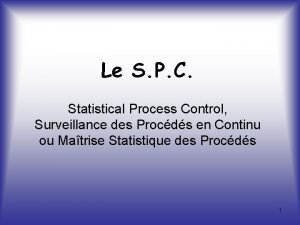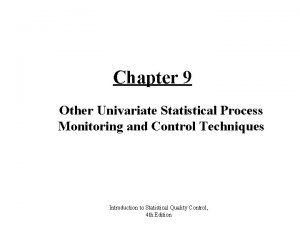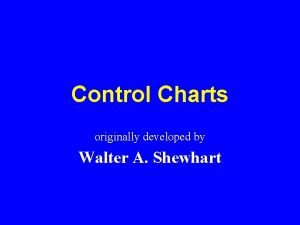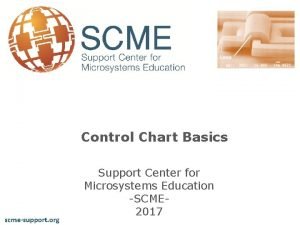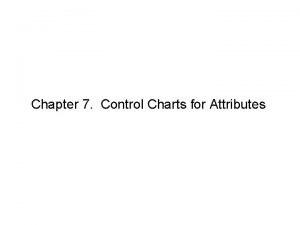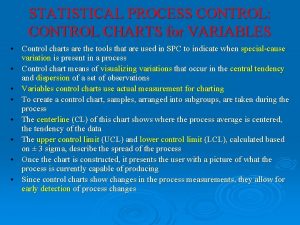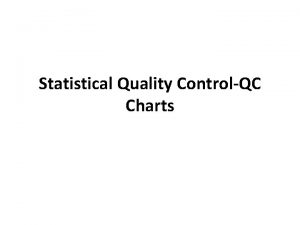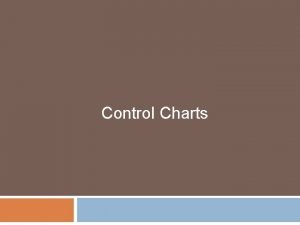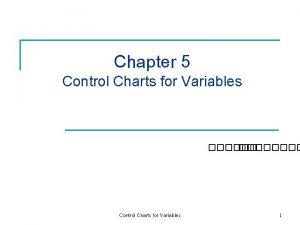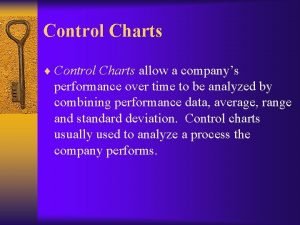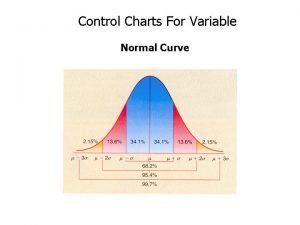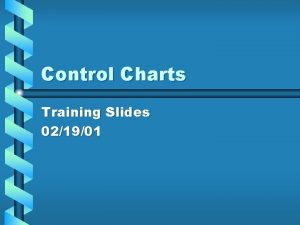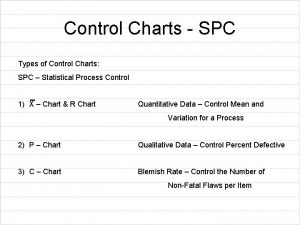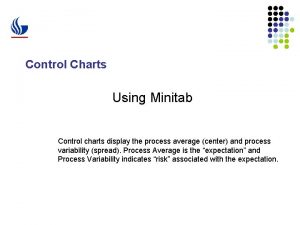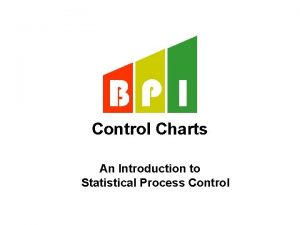Control Charts Statistical Process Control Statistical process control











- Slides: 11

Control Charts

Statistical Process Control • Statistical process control is a collection of tools that when used together can result in process stability and variance reduction. • A control chart is one of the tools used in statistical process control. 2

Introduction to Control Charts Basic Principles A typical control chart has control limits set at values such that if the process is in control, nearly all points will lie within the upper control limit (UCL) and the lower control limit (LCL). Figure 1 A typical control chart. 3

Introduction to Control Charts Basic Principles where k = distance of the control limit from the center line w = mean of some sample statistic, W. w = standard deviation of some statistic, W. 4

Introduction to Control Charts Basic Principles Important uses of the control chart 1. Most processes do not operate in a state of statistical control 2. Consequently, the routine and attentive use of control charts will identify assignable causes. If these causes can be eliminated from the process, variability will be reduced and the process will be improved 3. The control chart only detects assignable causes. Management, operator, and engineering action will be necessary to eliminate the assignable causes. 5

Introduction to Control Charts Basic Principles Types of control charts • Variables Control Charts – These charts are applied to data that follow a continuous distribution. • Attributes Control Charts – These charts are applied to data that follow a discrete distribution. 6

Introduction to Control Charts Basic Principles Popularity of control charts 1) Control charts are a proven technique for improving productivity. 2) Control charts are effective in defect prevention. 3) Control charts prevent unnecessary process adjustment. 4) Control charts provide diagnostic information. 5) Control charts provide information about process capability. 7

Introduction to Control Charts Analysis of Patterns on Control Charts Western Electric Handbook Rules A process is considered out of control if any of the following occur: 1) One point plots outside the 3 -sigma control limits. 2) Two out of three consecutive points plot beyond the 2 sigma warning limits. 3) Four out of five consecutive points plot at a distance of 1 -sigma or beyond from the center line. 4) Eight consecutive points plot on one side of the center line. 8

Introduction to Control Charts Analysis of Patterns on Control Charts Figure 2 The Western Electric zone rules. 9

Introduction to Control Charts Analysis of Patterns on Control Charts Figure 3 X-bar control chart. 10

Introduction to Control Charts Analysis of Patterns on Control Charts Figure 4 An X-bar chart with a cyclic pattern. 11
